Rhus Prairie Flame
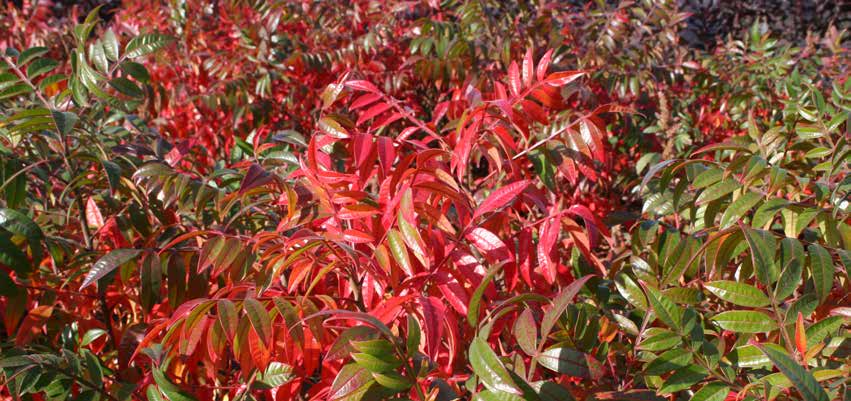
I recently had the pleasure of taking a trip with my son through the Southern Missouri Ozarks region to float a portion of the famous Current River. The drive through this area was spectacular. The fall air was crisp and the colors were just starting to show throughout the native Oak/Hickory forest. The roads were narrow, so we were able to get a close-up view of a wide swath of native Missouri trees. As is my habit, I was quizzing my son on the different trees and shrubs as we passed closely by them. It is nothing he particularly enjoys… tolerates mostly, from his nurseryman father.
Eventually, much to my delight, he responded with a question. “What are those red ones?” Referring to a small understory plant growing on the edge of the woods with a deep, brilliant red color. Even better, I had an answer for him!
The plant he saw, with the outstanding fall color, was the common smooth sumac, Rhus glabra. Often considered a nuisance plant, one couldn’t help but admire its colorful attributes in its natural environment.
A large and diverse group of plants, Rhus species have a broad natural range. Because of their ability to tolerate difficult planting sites and poor soil conditions, Sumac species have been widely used in roadway projects as well as reclamation-type situations. Yet, over the last several years, numerous selections have been introduced that allow this plant entry into more of the mainstream of landscape use. Selections have been made for size control as well as growth habit, fall color, and not the least of which, sterility. One of these more recent selections is Prairie Flame. A seedling selection of Rhus copallina var. latifolia made by the Morton Arboretum.
Shining Sumac is one of several common names for this particular species and shine it certainly does. Prairie Flame sports extremely lustrous, glossy dark green foliage throughout the growing season. Selected as well for its compact habit, Prairie Flame tops out at around five to seven feet in height after 15 years of growth. Compared to the species (20-30’), Prairie Flame would be considered a dwarf plant.
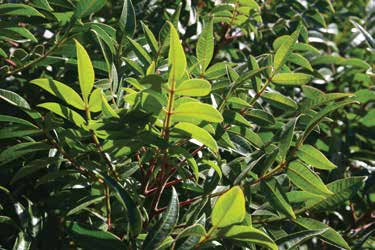
Summer leaves 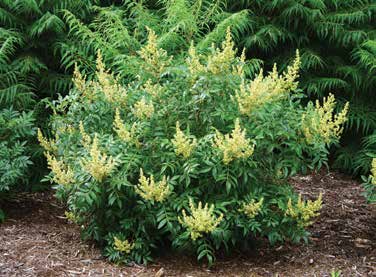
Creamy-yellow blooms 
Fall color
Most sumacs have interesting flowers and Prairie Flame doesn’t disappoint. Beginning around mid to late summer, creamy yellow to white blooms emerge on 4-6” panicles. Yet, if the issue of invasive is a concern, Prairie Flame is a male selection, so spread through reseeding is not a worry. The characteristic fruiting clusters often seen on native sumacs will not develop.
Now, getting back to where we started, let’s talk about this plants most exciting attribute, the fall color. Described as brilliant, striking, fire engine red, the adjectives are many. One thing to be sure, Prairie Flame will provide one of the most dependable fall color displays in the landscape.
Wet or poorly drained sights can be a problem for most Rhus cultivars and Prairie Flame is no exception. Avoid those when possible. Otherwise, Prairie Flame can be easily grown in a wide range of soil types. Other than a slight susceptibility to powdery mildew, Prairie Flame has no other diseases of note and is virtually pest free.
Beaver Creek Nursery in Northern Illinois has been growing Prairie Flame for over 10 years. “It’s a spectacular plant,” says Steve Didier container production manager. It is one of the earliest plants to color up and is an
outstanding scarlet red. “As a matter of fact, we have already sold out our fall crop,” says Steve.
An ounce of prevention or a pound of cure?
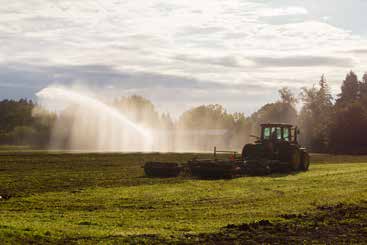
In many cases once a crop is harvested, the field is simply subsoiled, disced, leveled and replanted with little consideration given to soil chemistry and biology. Over time, this approach will lead to diminishing soil health and productivity, which can affect plant growth and health issues.
For bareroot and in-ground field production nurseries, soil is the lifeblood of our product. It provides anchor for the plants and is the source from which they receive moisture, nutrition and biological interaction. It is where the root systems develop and in some cases, the root ball they are shipped with. During the growing process, the soil takes punishment from compaction by equipment, erosion, herbicides, noxious weeds along with organic matter and soil depletion.
Another way to view this time between crops is a chance to address concerns identified during the last production cycle and an opportunity to improve conditions ahead of the next planting. The process can begin by putting a plan together to guide the work. Start by identifying specific needs and measures to address them. Consider the options and establish priorities to work within your time frame. Some options to evaluate are:
- Noxious weed control
- Drainage and erosion issues
- Soil compaction
- Organic matter content levels
- Residual herbicides (possibly from previous farming)
- Soil pH and nutrient levels
Noxious weeds can rob plants of moisture and nutrition particularly during a drought. Weeds can harbor insects and disease as well as contribute to an undesirable finished product. An open field systemic herbicide is a good start to rejuvenate a field.
Drainage and erosion issues are best dealt with when the field is vacant. Land leveling, contouring or installing drain tile or catchment basins can eliminate or reduce drowned out areas and plant mortality while retaining valuable field soil.
Cover crops grown for soil improvement will also add to organic matter content when worked into the soil as a “green manure”. The value here is that organic matter and eventually humus work to hold moisture and nutrients while providing food for the microorganisms that make up the biological element of soils, which is responsible for allowing plant roots to access water and nutrients.
Applying good compost to the field is an excellent method of increasing organic matter but more importantly inoculating the soil with microbes to increase and stimulate biological activity. One precautionary note is to understand the source and quality of the compost to avoid trash and disease being spread upon the field.
Residual herbicides in the soil can have negative impact on plant establishment and growth. Some varieties are particularly sensitive to herbicides that may have been used on corn or soybeans. There is great variability to a plants tolerance to herbicide, with items such as Tilia and Hydrangea being quite sensitive. Fallowing the soil or growing cover crops can help mitigate this exposure.
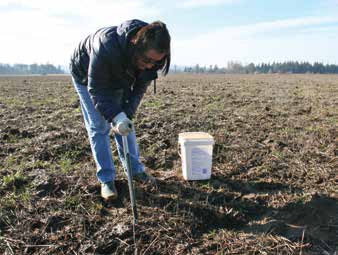
Soil Testing 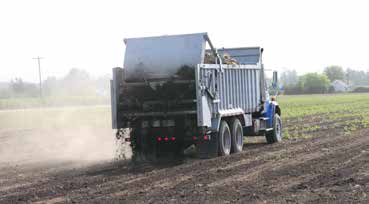
Spreading Compost
One of the least expensive and best indicators of soil nutrition is a simple soil test. For $50 and a half hour of time one can determine the nutritional values of the soil in your field. This information allows for pH adjustment and the balancing of nutrients with a broadcast application prior to planting. This approach can provide major and minor elements preplant; reducing the need for balanced fertilizer applications later (this is variable by area and soil type).
If you don’t have an active soil enhancement program, it can be overwhelming to begin. However, start by implementing the practice that will provide the greatest benefit on a piece of ground with the greatest
need. The rewards will be obvious and beneficial providing reason to expand the process. The benefits have the potential to reduce noxious weeds, eliminate drowned out plants, retain moisture and nutrients and reduce reactionary solutions to growth issues. This comprehensive and proactive approach will eventually produce stronger crops requiring less input where costs are diminished and shift from curative to preventative.
The process does not need to stop with the replanting of the field. Activities like in-row seeding of cover crops can continue the soil building and erosion control process.
There are no “silver bullets”, however a proactive, comprehensive approach of addressing immediate needs while focusing on long-term soil building will enhance and preserve your soil resource for future crops. Remember, “Success is a thousand details”.